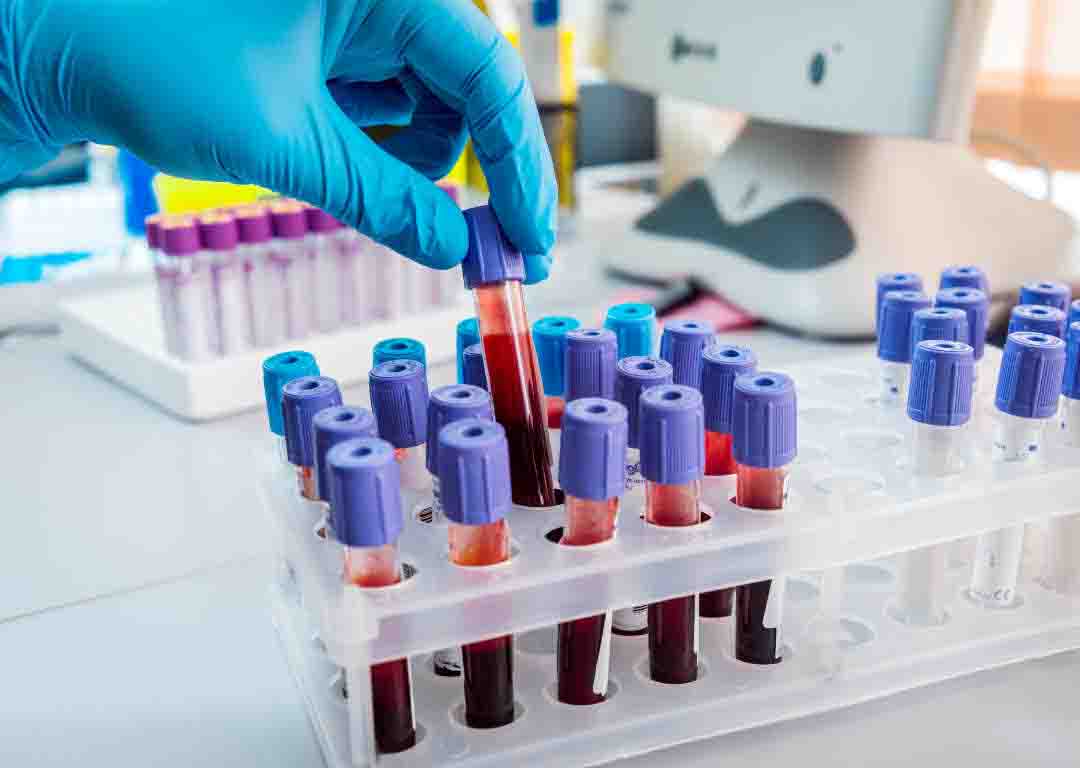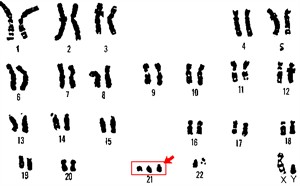Prenatal non-invasive test for the detection of trisomies 21, 18 and 13
Prenatal diagnosis allows detection during pregnancy of chromosomal anomalies , such as trisomies. A trisomy arises when, instead of two copies of each chromosome, the newborn has three copies of a particular chromosome.
Trisomy 21 or Down’s syndrome is the most frequent trisomy at the moment of birth. Down’s syndrome is related with slight to moderate intellectual incapacity and can cause digestive malformations and congenital heart defects. It is calculated that trisomy 21 is present in one in every seven hundred births.
Trisomy 18 or Edwards syndrome is less frequent and shows a high rate of spontaneous abortion. Babies born with trisomy 18 often have congenital heart problems as well as other medical disturbances, which reduces their life expectancy. It is calculated that approximately 1 in every 5,000 newborns suffers from this pathology.
Trisomy 13 or Patau syndrome is related with a high level of spontaneous abortion. Babies born with Trisomy 13 usually have serious congenital heart defects and other medical problems. Survival beyond the first year is not very common. It is calculated that approximately one in every 16,000 newborns has trisomy 13.
The test detects trisomies of chromosomes 21, 18 and 13 in the foetus.
Advantages of the test
The prenatal test evaluates the risk of foetal trisomies by measuring the relative amount of foetal DNA in the mother’s blood.
This test is based on new advances in non-invasive prenatal tests. Unlike other tests, it does not involve any risk for either the mother or the foetus, as it is a blood test.
There are other tests which also base their analysis on the detection of foetal DNA in the mother’s blood but, unlike them, it bases its analysis on the new DANSR technique, which allows the costs of the analysis to be reduced, making this test more accessible to the population in general.
Scientific studies have shown that this test detects correctly in up to 99% of cases and it has a false positive index of less than 0.1% for the detection of trisomies 21 and 18. Given the low incidence of trisomy 13, the results obtained up to the present show a rate of false positives of 0.2% for the detection of trisomy 13. Other diagnostic tests will be necessary such as amniocentesis or corial biopsy to confirm a high-risk result. These tests are highly invasive and involve a risk of foetal loss.
Indications
It is to be used on women with a non-multiple pregnancy with less than ten weeks of pregnancy. it can be used on women who have undergone a cycle of in vitro fertilisation, including those who got pregnant via egg donation. Given that the test does not involve any risk, unlike invasive tests, it is not limited to a particular age group, and its use as a method of routine screening is appropriate.
Interpretation of the results
Low-risk result
If the prenatal test indicates a low risk, the probability of having a baby with trisomy 21, trisomy 18, or trisomy 13 is very low. As occurs with any test, a low-risk result reduces but does not eliminate, the probability of having a baby with a trisomy.
High-risk result
If the result of the prenatal test indicates a high risk, there is a higher probability of having a baby with trisomy 21, trisomy 18or trisomy 13. If your result shows a high risk, your doctor will give you genetic advice and information on diagnostic tests so as to determine whether your baby has one of these disabilities.
Requirements
• Sample: blood with a specific kit
• Documentation: form for collection of data and specific informed consent




